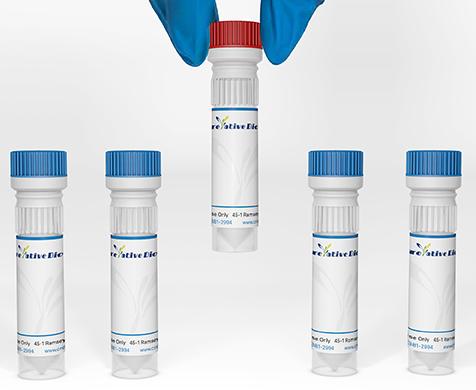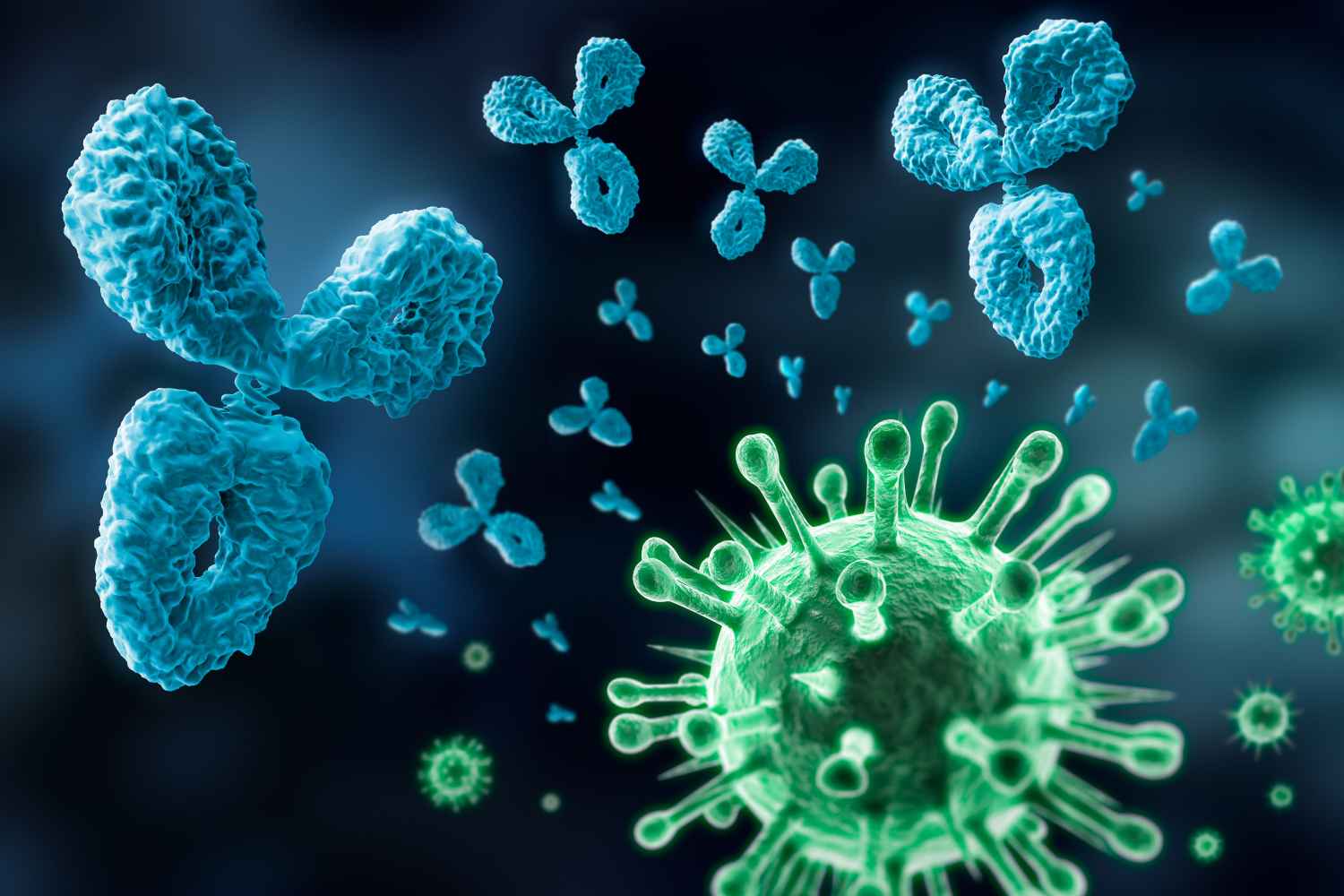M. tuberculosis fbpC
The antigen 85 proteins (FbpA, FbpB, FbpC) are responsible for the high affinity of mycobacteria to fibronectin, a large adhesive glycoprotein, which facilitates the attachment of M.tuberculosis to murine alveolar macrophages (AMs). They also help to maintain the integrity of the cell wall by catalyzing the transfer of mycolic acids to cell wall arabinogalactan and through the synthesis of alpha,alpha-trehalose dimycolate (TDM, cord factor). They catalyze the transfer of a mycoloyl residue from one molecule of alpha,alpha-trehalose monomycolate (TMM) to another TMM, leading to the formation of TDM.
Full Name
diacylglycerol acyltransferase/mycolyltransferase Ag85C
Function
The antigen 85 proteins (FbpA, FbpB, FbpC) are responsible for the high affinity of mycobacteria to fibronectin, a large adhesive glycoprotein, which facilitates the attachment of M.tuberculosis to murine alveolar macrophages (AMs). They also help to maintain the integrity of the cell wall by catalyzing the transfer of mycolic acids to cell wall arabinogalactan and through the synthesis of alpha,alpha-trehalose dimycolate (TDM, cord factor). They catalyze the transfer of a mycoloyl residue from one molecule of alpha,alpha-trehalose monomycolate (TMM) to another TMM, leading to the formation of TDM.
Biological Process
Glycolipid biosynthetic processManual Assertion Based On ExperimentIDA:MTBBASE
Lipid transportManual Assertion Based On ExperimentIMP:MTBBASE
Mycolate cell wall layer assemblyManual Assertion Based On ExperimentIDA:MTBBASE
Response to antibioticManual Assertion Based On ExperimentIEP:MTBBASE
Lipid transportManual Assertion Based On ExperimentIMP:MTBBASE
Mycolate cell wall layer assemblyManual Assertion Based On ExperimentIDA:MTBBASE
Response to antibioticManual Assertion Based On ExperimentIEP:MTBBASE
Cellular Location
Secreted
View more
Anti-M. tuberculosis fbpC antibodies
+ Filters
 Loading...
Loading...
Target: M. tuberculosis fbpC
Host: Mouse
Antibody Isotype: IgG1, κ
Specificity: M. tuberculosis, M. smegmatis
Clone: CBMC-C0133
Application*: E, WB
More Infomation
Hot products 
-
Mouse Anti-BrdU Recombinant Antibody (IIB5) (CBMAB-1038CQ)

-
Rabbit Anti-AKT2 (Phosphorylated S474) Recombinant Antibody (V2-556130) (PTM-CBMAB-0605LY)

-
Mouse Anti-CD247 Recombinant Antibody (6B10.2) (CBMAB-C1583-YY)

-
Rabbit Anti-CCL5 Recombinant Antibody (R0437) (CBMAB-R0437-CN)

-
Rat Anti-CD63 Recombinant Antibody (7G4.2E8) (CBMAB-C8725-LY)

-
Mouse Anti-ACTN4 Recombinant Antibody (V2-6075) (CBMAB-0020CQ)

-
Rabbit Anti-ADRA1A Recombinant Antibody (V2-12532) (CBMAB-1022-CN)

-
Mouse Anti-DLG1 Monolconal Antibody (4F3) (CBMAB-0225-CN)

-
Mouse Anti-BRD3 Recombinant Antibody (CBYY-0801) (CBMAB-0804-YY)

-
Mouse Anti-CSPG4 Recombinant Antibody (CBFYM-1050) (CBMAB-M1203-FY)

-
Rat Anti-(1-5)-α-L-Arabinan Recombinant Antibody (V2-501861) (CBMAB-XB0003-YC)

-
Rabbit Anti-ALOX5AP Recombinant Antibody (CBXF-1219) (CBMAB-F0750-CQ)

-
Mouse Anti-AHCYL1 Recombinant Antibody (V2-180270) (CBMAB-A1703-YC)

-
Mouse Anti-CCDC6 Recombinant Antibody (CBXC-0106) (CBMAB-C5397-CQ)

-
Mouse Anti-CCNH Recombinant Antibody (CBFYC-1054) (CBMAB-C1111-FY)

-
Mouse Anti-CIITA Recombinant Antibody (CBLC160-LY) (CBMAB-C10987-LY)

-
Mouse Anti-CECR2 Recombinant Antibody (CBWJC-2465) (CBMAB-C3533WJ)

-
Mouse Anti-ARG1 Recombinant Antibody (CBYCL-103) (CBMAB-L0004-YC)

-
Mouse Anti-ACTG1 Recombinant Antibody (V2-179597) (CBMAB-A0916-YC)

-
Mouse Anti-C5b-9 Recombinant Antibody (aE11) (CBMAB-AO138LY)

For Research Use Only. Not For Clinical Use.
(P): Predicted
* Abbreviations
- AActivation
- AGAgonist
- APApoptosis
- BBlocking
- BABioassay
- BIBioimaging
- CImmunohistochemistry-Frozen Sections
- CIChromatin Immunoprecipitation
- CTCytotoxicity
- CSCostimulation
- DDepletion
- DBDot Blot
- EELISA
- ECELISA(Cap)
- EDELISA(Det)
- ESELISpot
- EMElectron Microscopy
- FFlow Cytometry
- FNFunction Assay
- GSGel Supershift
- IInhibition
- IAEnzyme Immunoassay
- ICImmunocytochemistry
- IDImmunodiffusion
- IEImmunoelectrophoresis
- IFImmunofluorescence
- IGImmunochromatography
- IHImmunohistochemistry
- IMImmunomicroscopy
- IOImmunoassay
- IPImmunoprecipitation
- ISIntracellular Staining for Flow Cytometry
- LALuminex Assay
- LFLateral Flow Immunoassay
- MMicroarray
- MCMass Cytometry/CyTOF
- MDMeDIP
- MSElectrophoretic Mobility Shift Assay
- NNeutralization
- PImmunohistologyp-Paraffin Sections
- PAPeptide Array
- PEPeptide ELISA
- PLProximity Ligation Assay
- RRadioimmunoassay
- SStimulation
- SESandwich ELISA
- SHIn situ hybridization
- TCTissue Culture
- WBWestern Blot

Online Inquiry





